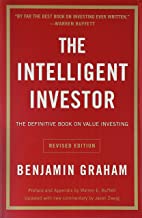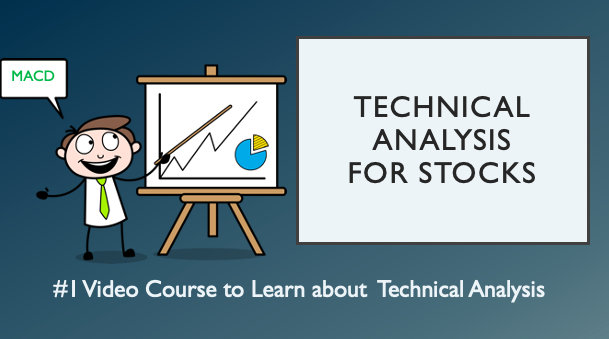Book Summary of The Intelligent Investor
by Benjamin Graham

What is "The Intelligent Investor" About?
"The Intelligent Investor" by Benjamin Graham is a seminal book on value investing, offering a comprehensive guide on how to adopt and execute a sound investment strategy. The book emphasizes the distinction between investing and speculating, advocating for a disciplined approach that prioritizes long-term safety and steady returns over quick gains. Graham introduces key concepts such as "margin of safety" and the importance of understanding market psychology to avoid common pitfalls in investing. The book is updated with commentary by Jason Zweig, which connects Graham's timeless advice with contemporary examples and challenges in the financial markets.
Who Should Read the Book "The Intelligent Investor"?
This book is essential reading for anyone interested in investing, from beginners to experienced investors. It's particularly valuable for those who wish to understand the fundamentals of value investing and learn how to navigate the stock market with a rational, disciplined approach. Financial advisors, analysts, and students of finance will also find the book's principles invaluable. Additionally, anyone who wants to avoid the common mistakes of emotional investing and speculation should consider this book a must-read.
10 Big Ideas from the Book "The Intelligent Investor"
-
Investment vs. Speculation: Investment is a long-term approach that seeks to ensure the safety of principal and adequate returns, whereas speculation is riskier and akin to gambling.
-
Margin of Safety: The central concept of the book, advocating for purchasing securities only when they are significantly undervalued, providing a cushion against errors in judgment or market downturns.
-
Market Fluctuations: Graham introduces the metaphor of Mr. Market, representing the stock market's irrational behavior. Intelligent investors should take advantage of market fluctuations rather than be swayed by them.
-
Defensive vs. Enterprising Investors: Defensive investors prioritize safety and minimal effort, maintaining a balanced portfolio, while enterprising investors are willing to put in more effort for potentially higher returns.
-
Importance of Emotional Discipline: Successful investing requires controlling emotions and not following the crowd, especially during market manias or panics.
-
Value Investing: Focus on the intrinsic value of companies and buy stocks when they are priced below this value, rather than following trends or market hype.
-
Long-Term Perspective: Investing should be viewed as a long-term endeavor. Short-term market movements should not dictate investment decisions.
-
Diversification: Spread investments across various sectors and asset types to minimize risk and protect against significant losses.
-
Security Analysis: Conduct thorough research and analysis of potential investments to understand their true value, rather than relying on market prices or tips.
-
Avoiding Overconfidence: Recognize the limits of your knowledge and do not assume that past performance guarantees future results. Be wary of predictions and maintain a conservative approach to investing.
Part 1: Understanding Investment vs. Speculation
- Investment Defined: Investment involves thorough analysis, ensuring safety of principal, and seeking adequate returns. Speculation, by contrast, is based on market price movements and carries higher risks.
- Key Ratios:
- Price-to-Earnings (P/E) Ratio: A P/E ratio around 15 or lower is ideal for value investments, indicating that a stock is reasonably priced relative to its earnings.
- Debt-to-Equity Ratio: For defensive investors, this should ideally be below 1, indicating lower financial risk.
Part 2: Inflation, Market Fluctuations, and Portfolio Policy
- Inflation Awareness: Inflation erodes purchasing power, making it crucial to focus on real returns. Common stocks often serve as a better hedge against inflation than bonds.
- Market Fluctuations: Graham introduces "Mr. Market" to illustrate market irrationality. Investors should not be swayed by market ups and downs but should use them to their advantage.
- Portfolio Policy:
- Defensive Investors: A balanced portfolio with 50% in stocks and 50% in bonds is recommended, adjustable within a range of 25%-75% depending on market conditions.
- Enterprising Investors: Focus on undervalued stocks with potential for growth, including special situations like mergers or restructurings.
- Key Ratios:
- Dividend Yield: A yield of 3-4% is desirable, providing steady income.
- Current Ratio: A current ratio above 2 indicates strong liquidity, particularly for defensive investments.
Part 3: Security Analysis and Stock Selection
- Fundamental Analysis: Investors should thoroughly analyze financial statements, focusing on earnings, dividends, and assets to determine intrinsic value.
- Stock Selection:
- Defensive Investors: Choose large, stable companies with a long history of paying dividends. Diversification across 10-30 stocks is advised.
- Enterprising Investors: Look for stocks with low P/E and P/B ratios, and consider companies with strong earnings growth and stable financials.
- Key Ratios:
- P/E Ratio: A P/E ratio of 15 or lower is ideal for both defensive and enterprising investors.
- Price-to-Book (P/B) Ratio: A P/B ratio below 1.5 indicates potential undervaluation.
- Return on Equity (ROE): A desirable ROE is 10% or higher, indicating efficient use of equity to generate profits.
Part 4: Convertible Issues, Case Studies, and Dividend Policy
- Convertible Securities and Warrants: These offer the potential for capital appreciation with less risk than direct stock investment but require careful consideration of conversion premiums and yields.
- Learning from Case Studies: Real-world examples show the application of value investing principles, highlighting the importance of patience and thorough analysis.
- Dividend Policy: A stable dividend policy is a sign of good management. Companies with a dividend payout ratio of 30-50% balance rewarding shareholders with reinvesting for growth.
- Margin of Safety: The central concept of value investing, the margin of safety, refers to purchasing stocks at a significant discount to their intrinsic value to protect against risk.
- Key Ratios:
- Conversion Premium: Lower premiums are preferred, indicating better value for convertible securities.
- Earnings Yield: This should be above 6-7%, signaling good value.
- Dividend Yield: Aim for a yield of 3-4% to ensure a solid return.
Key Concepts and Ratios to Remember:
- Investment vs. Speculation: Always prioritize investments that ensure the safety of principal and offer adequate returns.
- P/E Ratio: A P/E ratio around 15 or lower is a key indicator of value.
- Debt-to-Equity Ratio: Keep this ratio below 1 to minimize financial risk.
- Current Ratio: A current ratio above 2 indicates strong liquidity.
- Dividend Yield: A yield of 3-4% is ideal, particularly for defensive investors.
- P/B Ratio: Look for a P/B ratio below 1.5 for potential undervaluation.
- Return on Equity (ROE): Aim for an ROE of 10% or higher.
- Margin of Safety: Purchase stocks at a 30-50% discount to their intrinsic value.
Conclusion:
The Intelligent Investor emphasizes the importance of a disciplined, analytical approach to investing, with a strong focus on the concepts of intrinsic value and margin of safety. By adhering to Graham’s principles and using the key ratios as a guide, investors can build a portfolio that minimizes risk and maximizes the potential for long-term success. Whether you are a defensive or enterprising investor, the strategies outlined in this book provide a solid foundation for intelligent investing.
"The Intelligent Investor" by Benjamin Graham references several other books throughout its chapters to provide additional context, comparisons, and insights. Some of the notable books referenced include:
-
"Security Analysis" by Benjamin Graham and David L. Dodd - This is a foundational text in the field of value investing and is often cited in "The Intelligent Investor" for its comprehensive approach to financial analysis.
-
"Common Stocks and Uncommon Profits" by Philip Fisher - This book is referenced for its unique perspective on selecting stocks based on qualitative factors, which complements Graham's quantitative approach.
-
"Extraordinary Popular Delusions and the Madness of Crowds" by Charles Mackay - This historical account of financial manias is cited to illustrate the dangers of speculative bubbles and crowd psychology in investing.
-
"Devil Take the Hindmost: A History of Financial Speculation" by Edward Chancellor - This book is recommended as a factual account of historical speculative bubbles, providing context for understanding market behavior.
-
"Markets, Mobs, and Mayhem: A Modern Look at the Madness of Crowds" by Robert Menschel - This book offers a more modern take on the ideas discussed in Mackay's work and is suggested for a lighter reading on the same themes.
-
"The Money Managers" by G.E. Kaplan and C. Welles - This book is referenced for its insights into the world of professional investment management and its practices.
These references help enrich the text by offering readers additional resources to explore specific concepts in greater depth.
Browse Summaries of Top Investing books!
You may also like the below Video Courses



